Z97 Mini-ITX Review at $140: ASRock, MSI and GIGABYTE
by Ian Cutress on July 23, 2014 3:00 AM ESTZ97 Mini-ITX Roundup Conclusion
ASRock Z97E-ITX/AC
The big plus in the bucket for ASRock’s system is the support for both types of PCIe storage that Z97 brings. The M.2 on the rear is suitable for 30 and 42 mm drives, and shares lanes with the SATA Express port on the top of the board. Unfortunately therein lies several issues – the availability of PCIe storage drives, and whether they will be available in the desired sizes. Until we have had M.2 in the market, either using the PCIe or SATA protocols, for a good 12 months will we be able to understand what length of drive is most favored. If ASRock could have placed the connector at right angles, and thus offered more size options, then perhaps this would not be an issue:
Also, with respect to the zero SATA Express drives currently on the market, the large SATAe connector does no favors by being in between the PCIe slot and the DRAM slots for cable routing:
For those not interested in PCIe storage, at least the motherboard has six SATA ports, but these are all facing the same way such that locking SATA cables could be frustrating to remove.
Also on the components front, while the other two motherboards use two NICs and an ALC892 audio codec, the ASRock swaps a NIC for a higher level codec – the ALC1150. This shows through in our audio tests quite considerably, and given the addition to 802.11ac to all three motherboards, one might argue if two NICs are technically needed and it would be worth upgrading other features. At least the NIC used is the I218-V, the highest model of any motherboard tested today.
One of the downsides of the Z97E-ITX/AC in terms of out-of-the-box is the performance, due to the lack of MultiCore Enhancement by default. Despite it being enabled in our BIOS, it is obvious through some of our multithreaded benchmarks (HandBrake, POV-Ray) that the system does not implement that 39x multiplier across all loading. This might be easily avoided by doing some simple adjustments in the BIOS, but it is not an out-of-the-box benefit like the other motherboards.
The DPC Latency of the Z97E-ITX/AC comes 3rd, but the audio range and distortion numbers are significantly better. Boot timings also come out on top, and I also enjoyed the large range of automatic overclock options.
The BIOS and Software work well together, though the BIOS lacks the proper interactive fan control system that the software has. I find navigating the BIOS easy (a trait shared with the MSI board) and the software is easy on the eye.
Unlike the other two motherboards, I did not need to write any extra notes when testing the ASRock. This typically reflects a very easy-to-use package that works out of the box - a feature that is sometimes lacking with this very mature product segment.
MSI Z97I AC
One of the main issues with lower cost mini-ITX motherboards is routing through the PCB. Due to the low cost nature, most of these PCBs are four layers, or six layers maximum, meaning that care has to be taken for port and feature routing. The ideal mini-ITX motherboard has space for power connectors and ports to the right of the DRAM slots, and the opportunity to place cables cleanly and evenly. Perhaps four layers is not enough for this, because when I saw the MSI Z97I AC in the flesh, the positioning of the 4-pin CPU connector gave me cause for concern. Unless the power supply is mounted above the motherboard, there is going to be issues with wires climbing across the motherboard. MSI’s decision to place the CPU socket lower down on the motherboard limits the locations for the 4-pin power connector, and it might have been in this place at the request of a customer or a tradeoff with the other ports. The same can be said of the ASRock as well, with its 8-pin CPU power connector.
That aside, MSI comes hard in with the networking options, offering two Realtek NICs and the 2T2R 802.11ac Intel AC7260 WiFi. The Realtek ALC892 audio codec is not the best out of this three-motherboard review, but some users might be pleased with the removal of the VGA connector from the rear of the motherboard. The Z97I AC comes with four SATA 6 Gbps ports (note, the chipset and other motherboards offer six), a USB 3.0 header and four USB 3.0 ports but no PCIe storage options. The ClearCMOS and Go2BIOS buttons on the rear panel are a nice touch for users who need to adjust overclocks.
The BIOS and Software packages from MSI are growing in usability and efficiency, with the fan controls in the BIOS being a big plus along with the XMP button. The software gives fan controls as well as a RAMDisk option, although the ease at which 2.1 volts could be applied to the CPU is a cause for concern.
For performance, the MSI matches the GIGABYTE in beating the ASRock, especially in multithreaded benchmarks and also very slightly (<2%) in gaming benchmarks. The audio codec puts the MSI behind the ASRock though, and boot times are the worst of the three. The DPC Latency comes out on top at 43 microseconds, but for this we had to disable the WiFi module. Overclocking the MSI Z97I AC was normal, although it is worth noting that OC Genie did not push much (4.0 GHz) and the stock voltage on the platform seemed higher than the others (1.169 volts compared to 1.064-1.117).
In isolation, the MSI Z97I AC might come across as a nice motherboard that is fairly easy to use. But when placed against the competition, there seems to be other products out on the market, for a similar price, that might offer that better experience. Choosing Realtek for both the NICs and mid-range audio codec is cost saving measure, along with fewer SATA ports or no extra controllers. I will certainly offer kudos to the MSI BIOS team, who are making changes in the right direction for sure.
GIGABYTE Z97N-WIFI
A motherboard that is easy to set up, in terms of cabling, is always good to have on the test bed. The Z97N-WIFI is one such example, and this becomes one of its major selling points. By placing more of the important headers around the edges of the motherboard PCB, adding in the power cables, fan cables, SATA cables and any other cables makes building and repairing an easier job. The position of the socket, alongside the lack of a power delivery heatsink, would suggest that any size air cooler would fit with appropriate memory.
That lack of a power delivery heatsink might initially cause concern, however our testing was not in any way affected by the lack of one being there. GIGABYTE is claiming to use high efficiency components (over the standard) in this area, and our overclocking did not suffer as a result.
The combination of an Intel and an Atheros NIC seems like a strange choice here. Atheros also makes the Killer NIC, which GIGABYTE uses on a few motherboard models, but typically a Realtek NIC is used with a Realtek audio codec because Realtek offers a deal when used together. I might postulate that either GIGABYTE has spare stock of the Atheros AR81 NIC or there is a cost beneficial deal in place.
Like the ASRock, this Z97N-WIFI uses six SATA ports, but we have two on the edge of the PCB which should cover most HDD+SSD / SSD+ODD setups. Using a third or fourth drive requires a cable over some DRAM, and that would cover most users. Unfortunately one part that the GIGABYTE board gets marked down on is the ALC892 audio codec, which does not perform as well as the ASRock’s ALC1150.
For the BIOS, GIGABYTE’s mash of Startup Guide, HD mode and Classic mode is starting to become a bubbling cauldron of everything. GIGABYTE needs to decide if they are going to continue to support both modes or focus in perfecting one. A lack of focus means a split of resources, which is not always a good thing.
In terms of performance, because the GIGABYTE uses MultiCore Turbo, it joins the MSI in beating the ASRock, particularly in multi-threaded loads and a few frames in gaming. It sits in the middle of the three for DPC latency, audio results and boot time, but wins on power delta between long idle and CPU load. Automatic overclocking seemed overly aggressive, hitting 87ºC peak temperature with the lowest 4.3 GHz option, but the manual overclock performed well up to 4.5 GHz, hitting 4.6 GHz with high temperatures.
The GIGABYTE Z97N-WIFI layout should make a first-time builder’s job easier than the other two, and the use of dual HDMI might encourage users with middle-of-the-road monitors to go dual screen when using the IGP. Performance out of the box at stock is better than expected, although if you want PCIe storage or better onboard audio, there are boards that focus on those qualities.
More Than Spot The Difference
For each of these three motherboards, being very similar on price, there are several major areas I would consider for a regular under-the-desk/next-to-the-monitor home system. We rank the best from each area:
Feature Set: ASRock Z97E-ITX/AC
The Z97E-ITX/AC gets this one for its choice of an Intel NIC over Realtek, the upgraded audio codec and six SATA ports. The addition of PCIe storage options is an extra, even though the storage market still has to adjust to these new connectors which will come in time.
Motherboard Layout: GIGABYTE Z97N-WIFI
Hands down, the GIGABYTE wins this category for placing nearly all of its onboard headers around the edge of the PCB. Both the 24-pin ATX and the 4-pin CPU power connectors are here, along with the two fan headers and USB 2.0/3.0 headers. For first time builders, or those focusing on cable management, the Z97N-WIFI has the edge.
Out-of-the-Box Performance: MSI Z97I AC and GIGABYTE Z97N-WIFI
All three motherboards play tit-for-tat in the system benchmarks (MSI gets the best DPC Latency, GIGABYTE gets the best power draw delta, ASRock gets the best audio), but both the MSI and GIGABYTE boards win here due to their implementation of MultiCore Turbo, which allows the CPU to run at maximum turbo for any load. This gives both of these boards an extra element of performance (2-5%) in heavy CPU workloads, with the odd frame per second or two in the gaming benchmarks as well.
BIOS and Software: ASRock Z97E-ITX/AC and MSI Z97I AC
Both ASRock and MSI have got the visuals of their packages on a good direction, particularly ASRock in the software and MSI in the BIOS. Both use the Board Explorer feature to allow users to see what is installed as well. MSI has the better BIOS from a visual perspective, while ASRock’s layout might be more welcome. In the software, I enjoy the ASRock’s green on white more than the blue on black of the MSI or GIGABYTE, as well as the software package that ASRock is spending a lot of time on. MSI still has the best update software of the three, although that CPU OC option to hit 2.1 volts has to go.
Conclusion
If I were to assign a point to each of the four categories above, the ASRock Z97E-ITX/AC and GIGABYTE Z97N-WIFI would be joint first with 1.5 points each. Neither has the ideal package, and in fact some amalgam of the two would be great if it could fit into this price point. $140 is a tight squeeze for an Intel platform aimed at both at new features and ease-of-use, rather than something that should just get up and go. My recommendations are as follows:
ASRock Z97E-ITX/AC: For a user looking for feature set and better onboard audio, also to invest into PCIe storage in the future.
MSI Z97I AC: Better CPU performance and nice BIOS to learn, but potential cable management issues and fewer features.
GIGABYTE Z97N-WIFI: For a new builder or user wanting easy placement, with better CPU performance.
For mini-ITX Z97 motherboards two other tiers also exist, with four motherboards split between $160 and $200 from ASUS, GIGABYTE, MSI and EVGA. With any luck, our next mini-ITX roundups will have several of these. Stay tuned for those reviews.


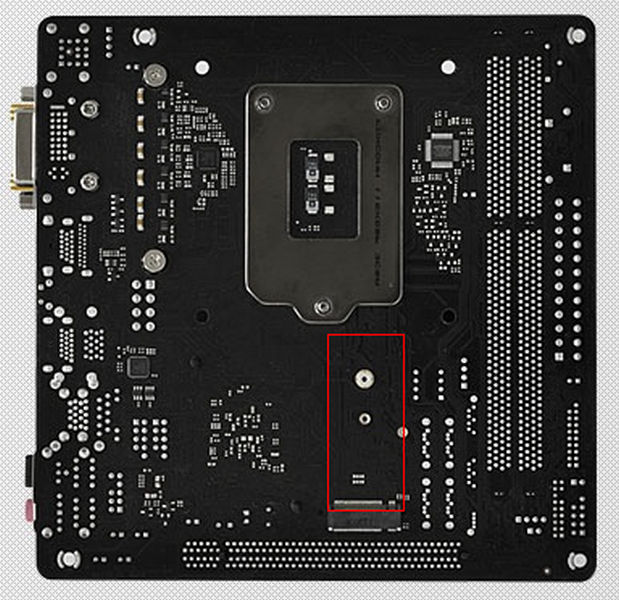
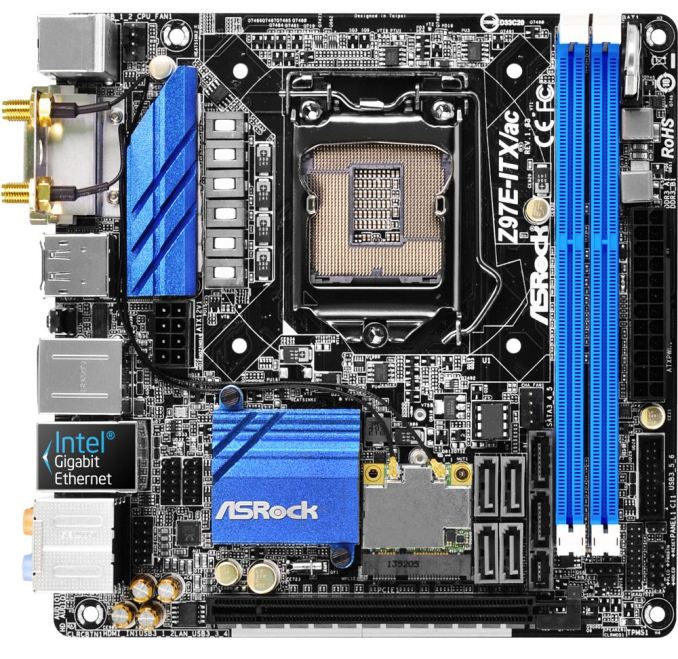

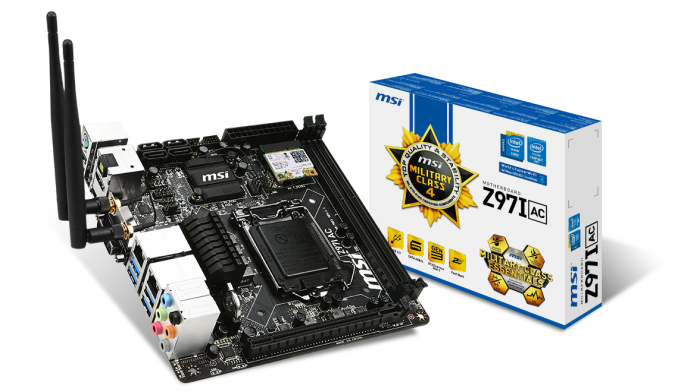
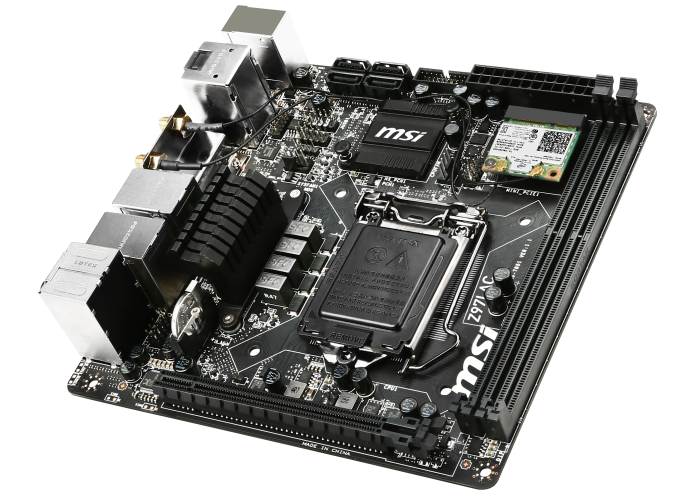
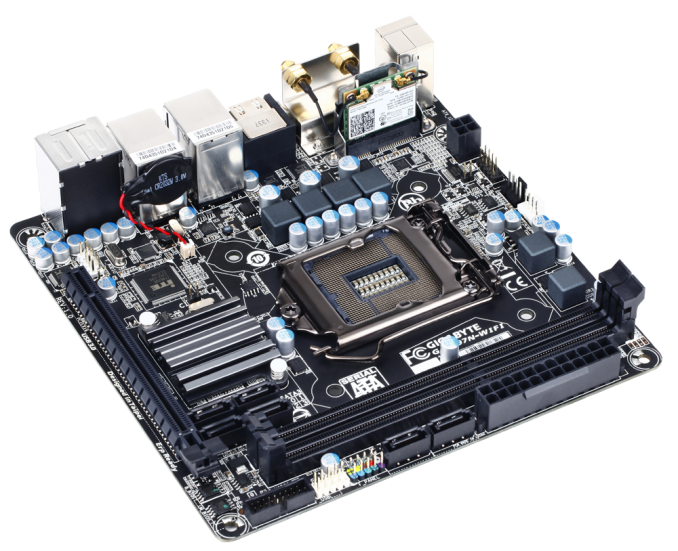









38 Comments
View All Comments
The_Assimilator - Saturday, July 26, 2014 - link
I'm sure the guy at Gigabyte who is responsible for getting rid of their warehouse of surplus VGA ports, was weeping in impotent fury at the fact that he couldn't shoehorn one onto this board.The_Assimilator - Saturday, July 26, 2014 - link
It really strikes me as odd that the motherboard manufacturers haven't integrated SATA multilane ports onto their boards. That would allow 4 drives to be connected to a single port on the mobo, which would shrink 6x SATA ports down to 1x multilane + 2x SATA. If Intel does the right thing with their next chipset and gives out an additional 2 SATA ports for a total of 8, then the 1 + 2 could be shrunk down to 2 SATA multilane ports of 4 drives each.Yes, there's issues with cabling, but in the mITX form factor board space is probably more important than cable count.
Valantar - Sunday, July 27, 2014 - link
Great article, a really interesting read. But a question keeps popping into my head: What about lower power CPUs? With these smaller motherboards (and cases) they are more relevant than ever, yet all the reviews I can see are for the top-of-the-line overclocking models. How about a review comparing the i7-4790k to the 4790s and 4790t (perhaps with some extra effort put into power consumption testing, heat/noise (with regard to small mITX cases), and so on)? I would love to see that!coolhund - Sunday, August 3, 2014 - link
Would you do me a favor and check if the Asrock Z97E-ITX still has issues with longer USB cables? On the Z87E-ITX things like webcams and USB 3.0 sticks start having massive issues at cable lengths longer than 5 to 6 ft. It even completely kills my partition on a USB 3.0 stick regularly.And yes, I tried several high quality and low quality cables that worked before on several other mainboards.
saulovh5150 - Sunday, August 3, 2014 - link
I recently built a system with the MSI Z97I AC, i5 4460, CoolerMaster 550W modular, 16GB RAM, SSD and a GTX770, a mid-class rig and I can safely say it works fine and will never, ever have an ATX rig again. Just be warned that the MSI packs 2 cheap antennas, I could barely get good signal with 2 walls between AP and the PC. When I swapped them for 2 aftermarket antennas all worked really well.This review just confirmed I had nothing to worry about feature or performance. I never really needed 3 pci slots since many years ago. Oh, and the system is so quiet.
Plipplop - Sunday, August 3, 2014 - link
Could you correct the mistake quoting MSI Z97I GAMING AC to have lower audio codec ALC892. It really hurts my eye because one reason I ended up ordering MSI was superb audio with Realtek® ALC1150 Codec. Thanks.Plipplop - Tuesday, August 5, 2014 - link
Sorry, my bad: Theres two boards, MSI Z97I GAMING AC and MSI Z97I AC with slightly lower specs.pc_mark1 - Friday, November 14, 2014 - link
I bought a ASRock Z97M-ITX with an i7 4790k. I'm really struggling with boot up with this board. I've installed twice and found I was forced to hard reset in both instances and doing this causes the issues. Without issues I've seen my PC boot in 5 seconds and go into login, once logged in loading wi-fi and finding internet in about 3 seconds. Once I hard reset, I'm seeing boot up slow, with the graphics card going off momentarily, then coming back on and displaying login but not allowing me to type for 2 more seconds. Once in, wi-fi is seeking connection for a further 45 seconds. The hard reset has caused this twice now, but the second fresh install showed the board working for the first 10-15 restarts as I added software and drivers and all worked flawlessly. Anyone got any suggestions? Using 1.1 on the board.